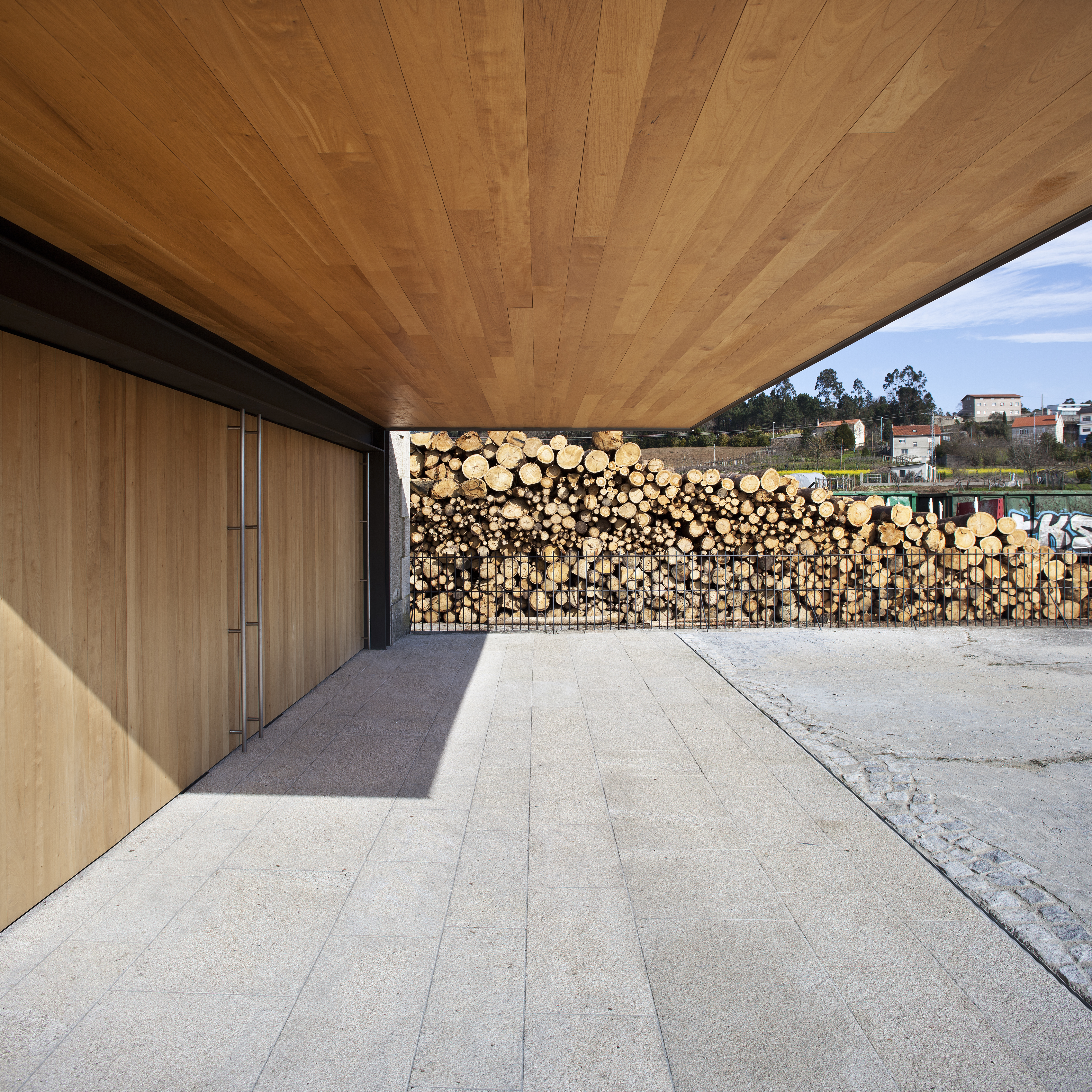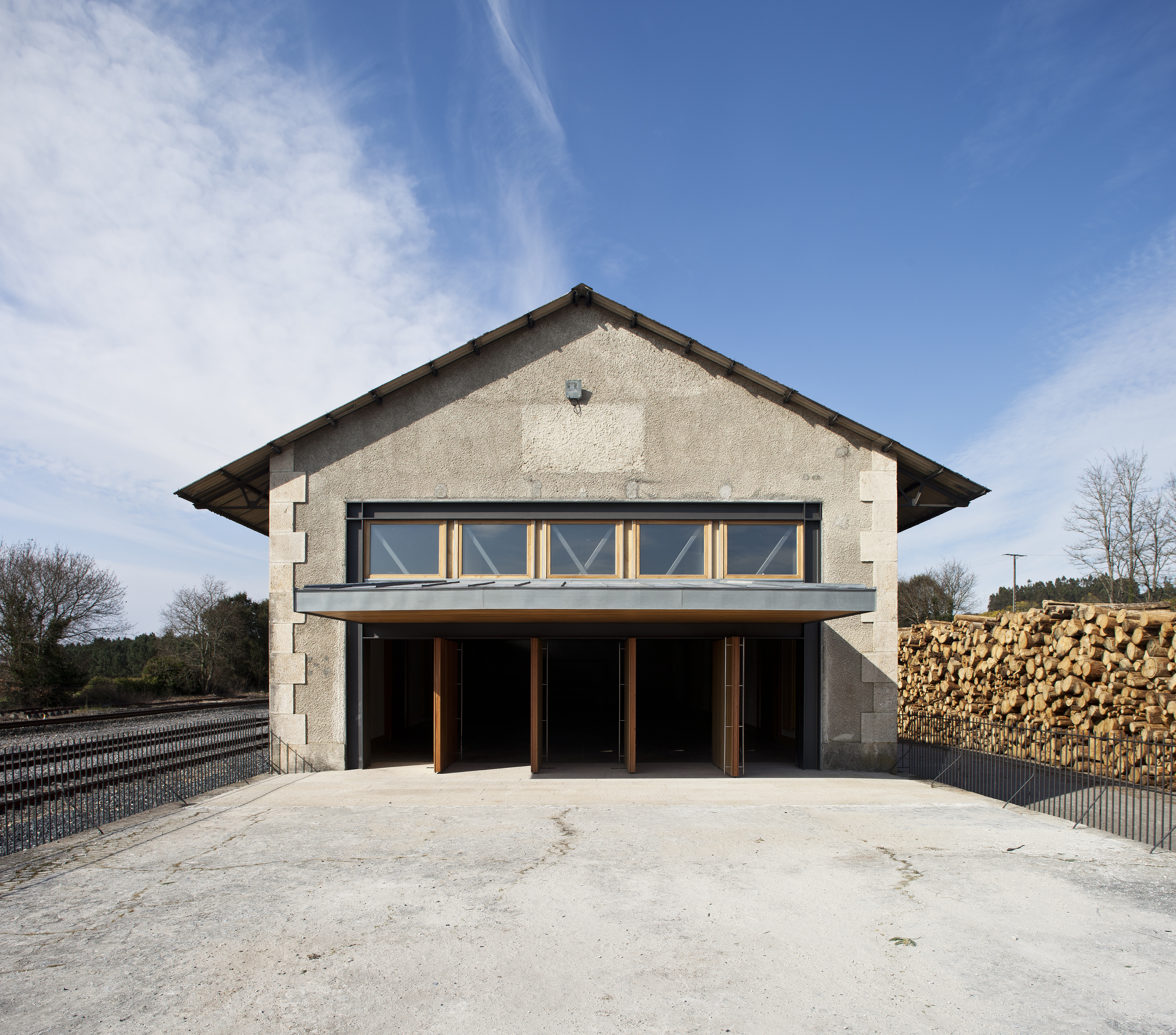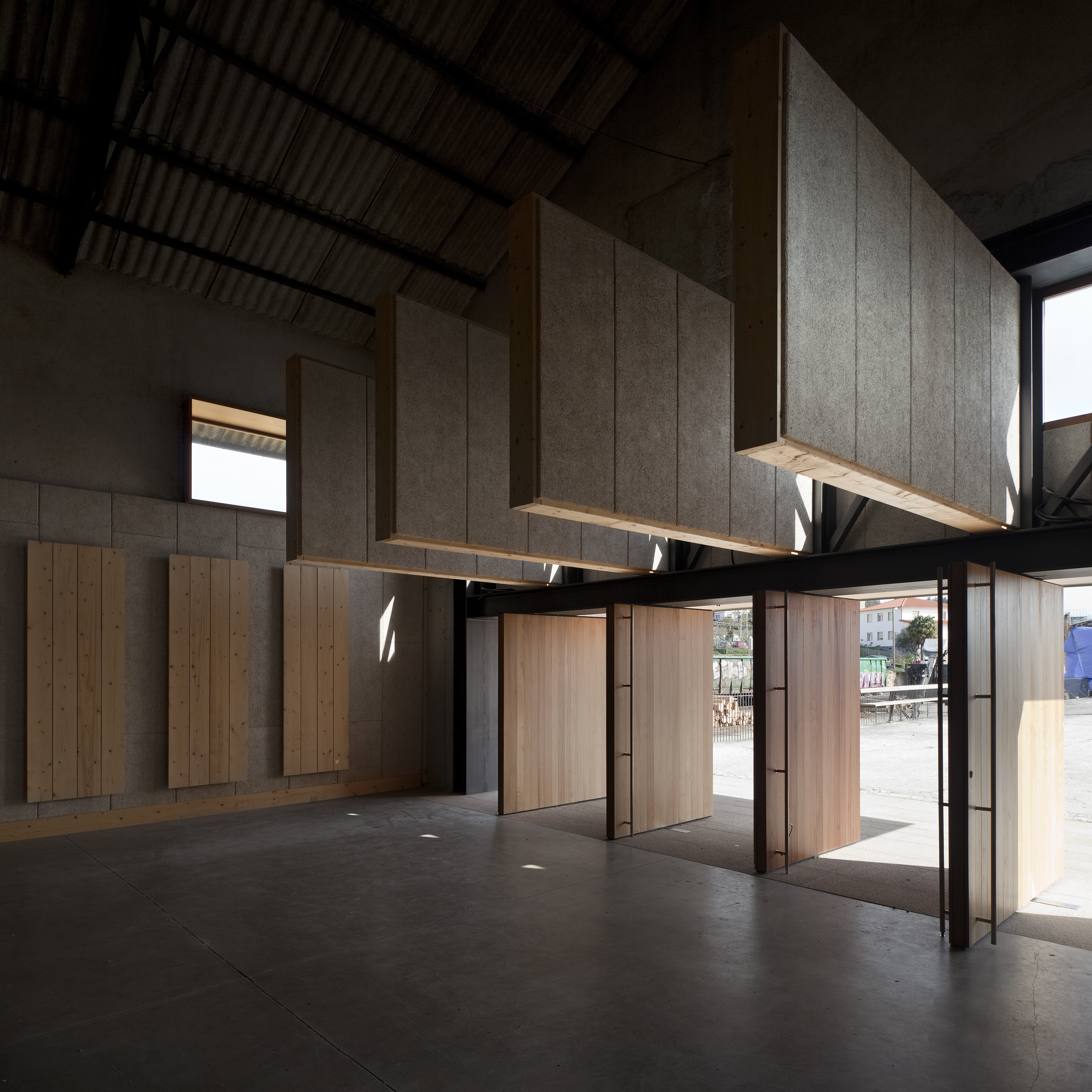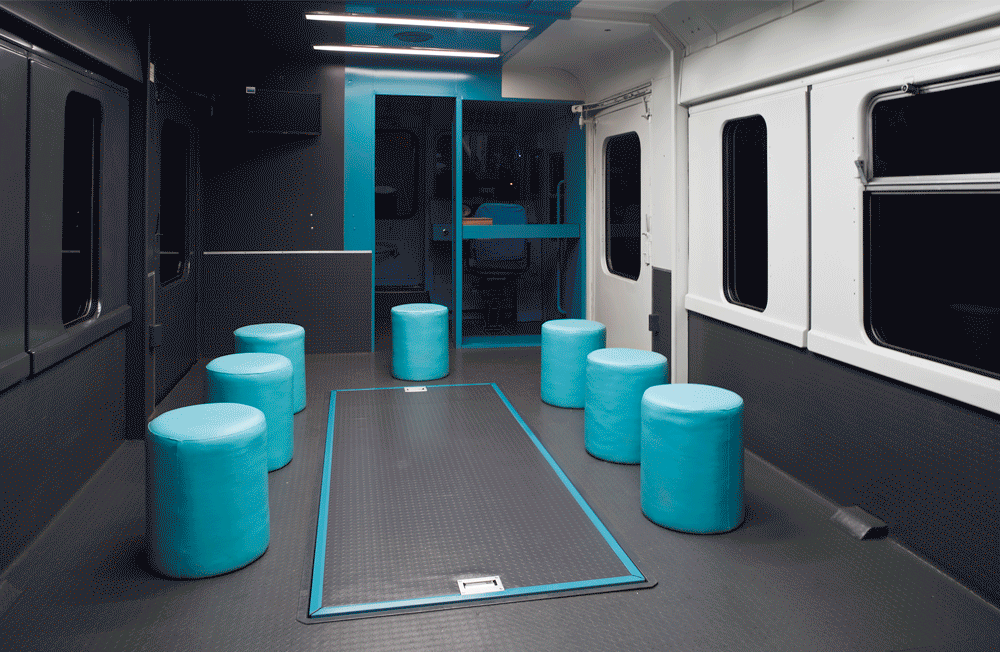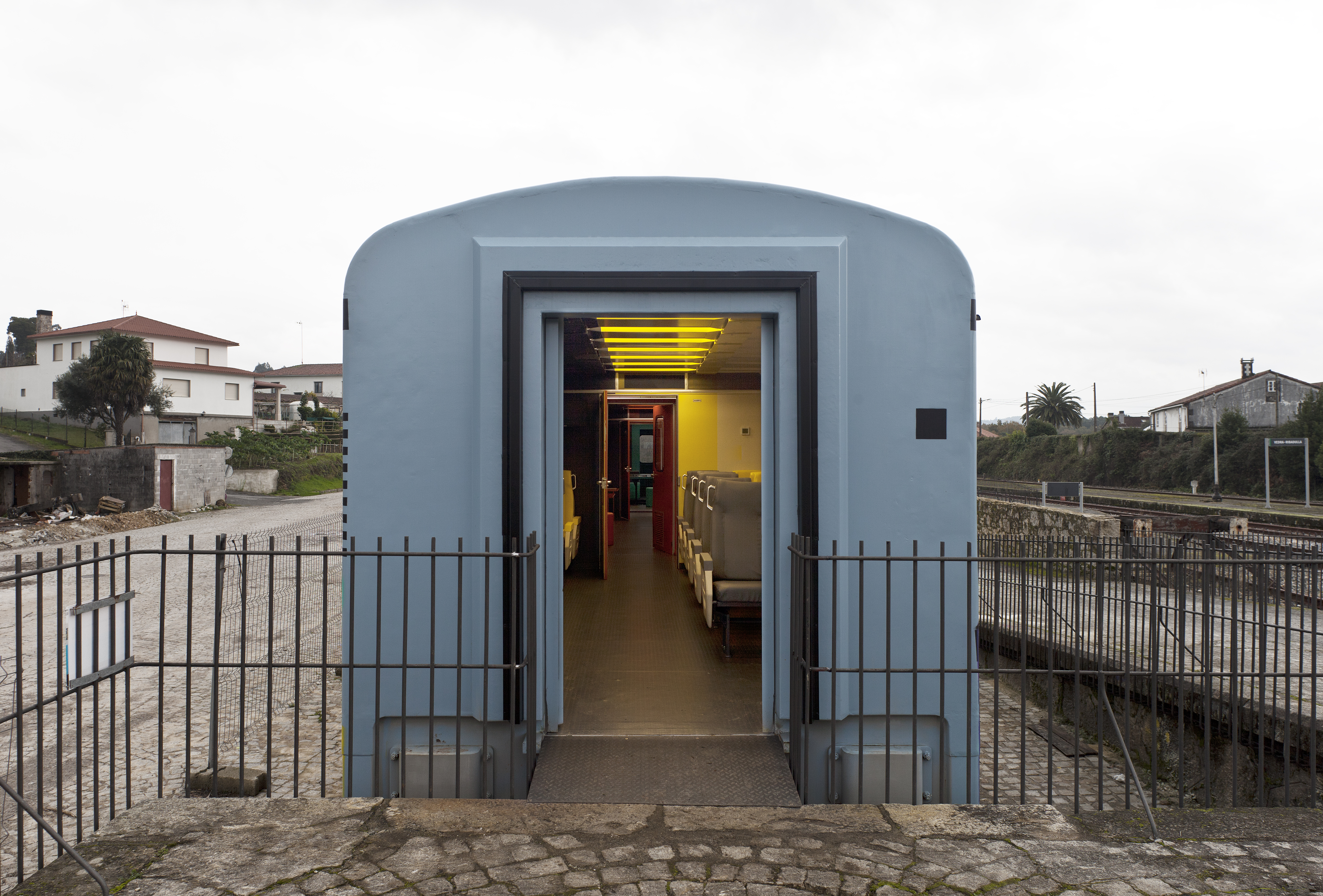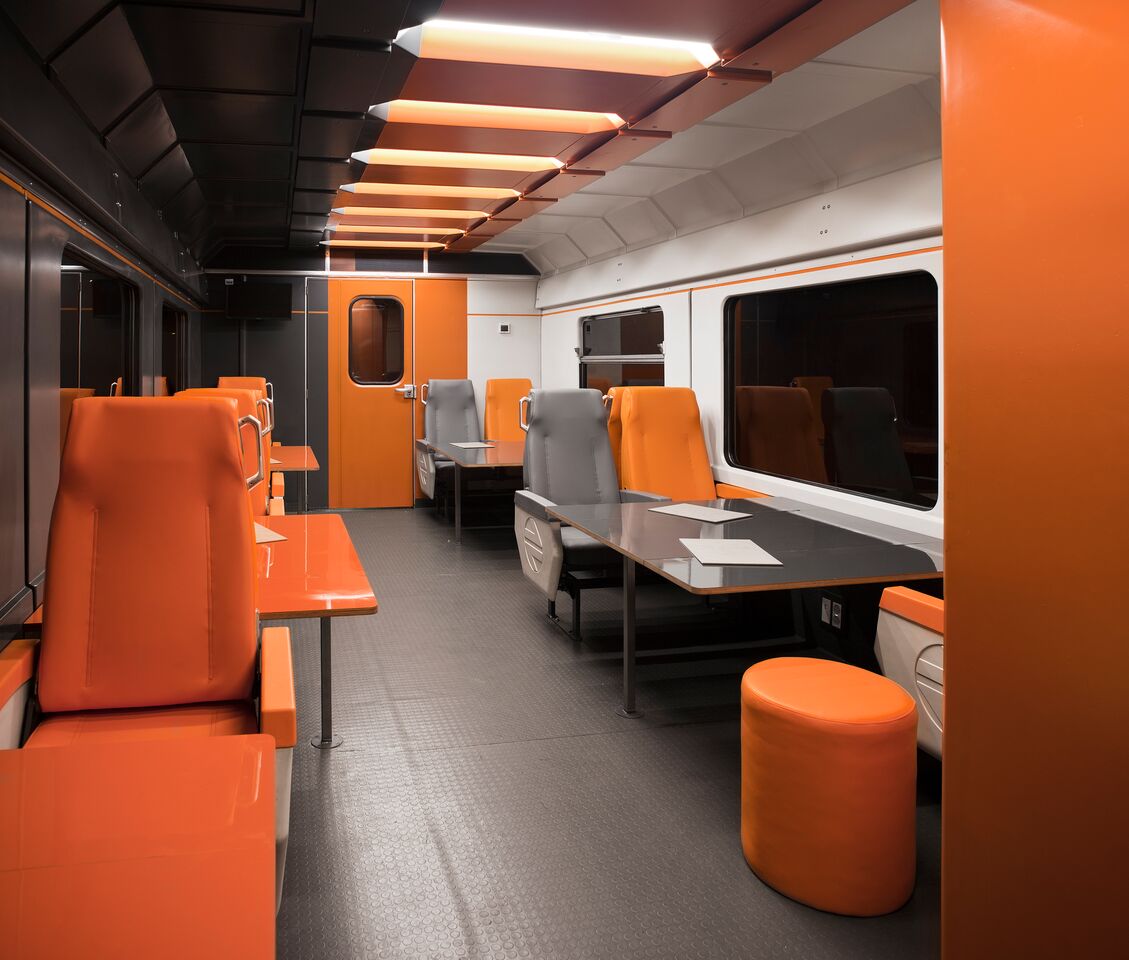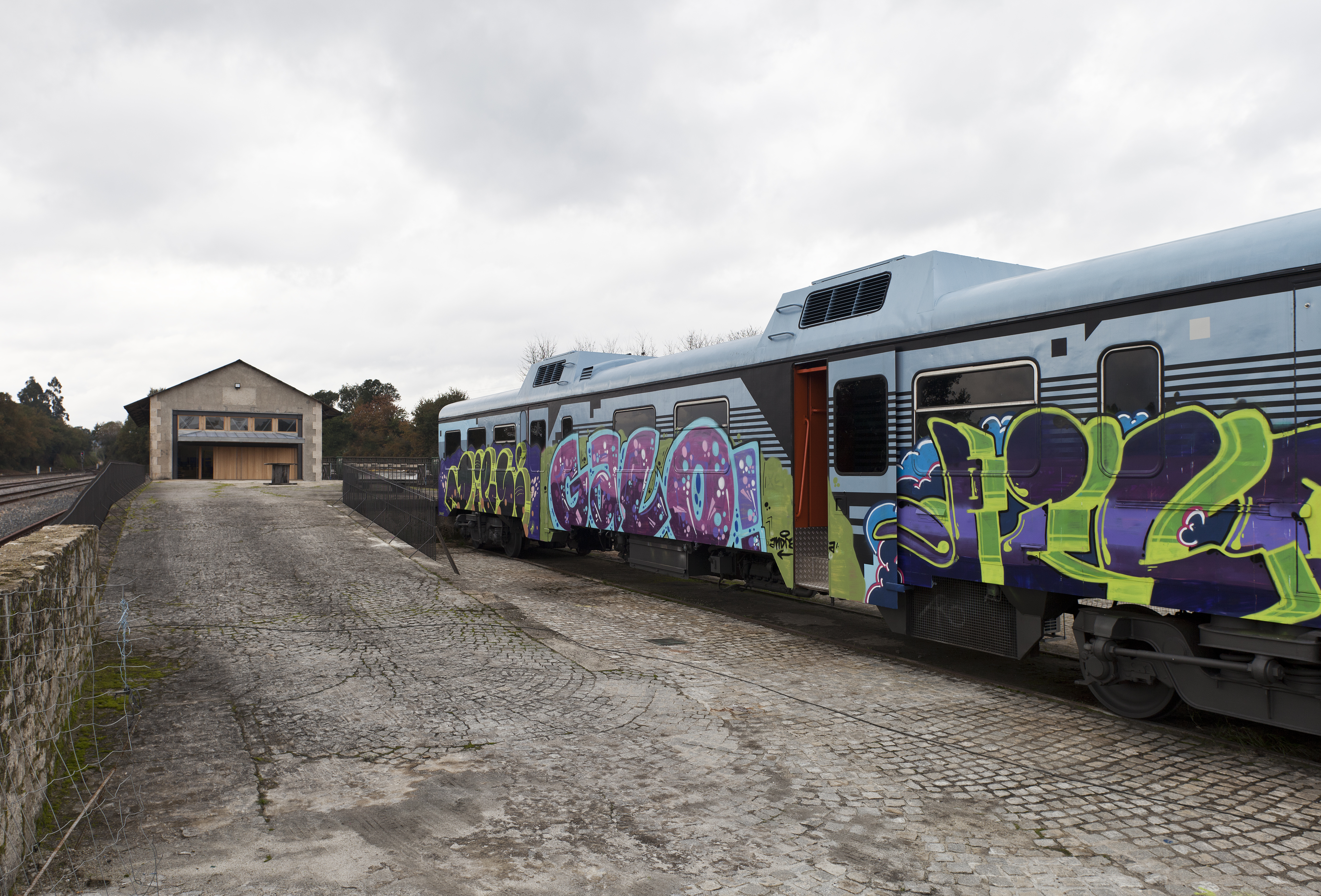A Estación cultural
Estación de Ferrocarril de Santa Cruz de Ribadulla
The Santa Cruz de Ribadulla station comprised a complex of 9,000 m2, half is still used for industrial purposes . The rest comprises a series of architectural elements such as the old station house, the toilet pavilion and two cargo sheds, to which is added an old railcar loaned through the National Railway Museum. This project is a plan aimed at the recovery and enhancement of the entire railway station with the aim of making it available to civil society.
Spain
Santa Cruz de Ribadulla.
Concello de Vedra, A Coruña, España
Concello de Vedra, A Coruña, España
Completed
Yes
Yes
Yes
Yes
EAFRD : European Agricultural Fund for Rural Development
{Empty}
No
15089: Vedra (ES)
This project is a plan aimed at the recovery and enhancement of the old Santa Cruz de Ribadulla railway station and the buildings that comprise it. An exercise that has been developed over 10 years in different phases given the scope of the project and the budgets available for each of the phases.
The actions focused mainly on the rehabilitation works of the old switch room, the external toilets and the adaptation of the carpentry of the existing storage warehouse on the same platform. To this must be added the incorporation and adaptation of a train carriage as a coworking space. The rehabilitation was carried out with the minimum possible investment, trying to adapt to the given materials and shapes and using traditional techniques, as well as working with employment workshops as an exercise in education and integration.
The project began with the rehabilitation of the old Station House, giving it a new use dedicated to the celebration of training courses and small seminars. The incorporation of the warehouses and platforms later meant the adaptation of the urban space with accessibility and protection measures (railings, toilets and sidewalks). Once the public space was arranged, the warehouse was worked on as a multipurpose sociocultural space. The second warehouse serves as support for the first, housing the dressing rooms and warehouses.
Finally, the rehabilitation of a FIAT RENFE 593 series motor car currently functions as a coworking center and incubator for local companies, new local companies and startups. This car has three spaces intended for a meeting room, work space and ICT area intended for product presentations and small conferences.
With this piece, a complex has been officially opened to the public that has not lost its use during the process of the different phases of work and that continues to grow according to the demand of needs.
The actions focused mainly on the rehabilitation works of the old switch room, the external toilets and the adaptation of the carpentry of the existing storage warehouse on the same platform. To this must be added the incorporation and adaptation of a train carriage as a coworking space. The rehabilitation was carried out with the minimum possible investment, trying to adapt to the given materials and shapes and using traditional techniques, as well as working with employment workshops as an exercise in education and integration.
The project began with the rehabilitation of the old Station House, giving it a new use dedicated to the celebration of training courses and small seminars. The incorporation of the warehouses and platforms later meant the adaptation of the urban space with accessibility and protection measures (railings, toilets and sidewalks). Once the public space was arranged, the warehouse was worked on as a multipurpose sociocultural space. The second warehouse serves as support for the first, housing the dressing rooms and warehouses.
Finally, the rehabilitation of a FIAT RENFE 593 series motor car currently functions as a coworking center and incubator for local companies, new local companies and startups. This car has three spaces intended for a meeting room, work space and ICT area intended for product presentations and small conferences.
With this piece, a complex has been officially opened to the public that has not lost its use during the process of the different phases of work and that continues to grow according to the demand of needs.
COMMUNITY
REPURPOSE
IDENTITY
TERRITORY
CRAFT
The project to rehabilitate the Santa Cruz de Ribadulla station has sought to provide the community of the municipality with a meeting place and a place of future, using an abandoned infrastructure. The railway station was once a symbol of progress and prosperity for the town, and its rehabilitation has sought to restore that same spirit, fitting it today within new frameworks of values.
Firstly, local and reused materials have been used as much as possible. Wood, a sustainable material, has played a fundamental role in the reconstruction of the central building. Likewise, an old train carriage has been reused, converting it into a coworking space that runs on solar panels.
Furthermore, sustainability has not only been sought in the form and execution, but also in the content of the activities carried out there. The coworking space also functions as an incubator for business projects, highlighting those related to local crafts, such as working with wood and stone. The train station is also the place where courses related to sustainable agriculture are given in a municipality with a long ethnological tradition and fame in the production of flowering plants, especially the camellia.
The station is the meeting and action point for a wide network of associations present in the municipality. Associations that from their different fields share the common purpose of adapting their actions and their production towards a more sustainable model.
Firstly, local and reused materials have been used as much as possible. Wood, a sustainable material, has played a fundamental role in the reconstruction of the central building. Likewise, an old train carriage has been reused, converting it into a coworking space that runs on solar panels.
Furthermore, sustainability has not only been sought in the form and execution, but also in the content of the activities carried out there. The coworking space also functions as an incubator for business projects, highlighting those related to local crafts, such as working with wood and stone. The train station is also the place where courses related to sustainable agriculture are given in a municipality with a long ethnological tradition and fame in the production of flowering plants, especially the camellia.
The station is the meeting and action point for a wide network of associations present in the municipality. Associations that from their different fields share the common purpose of adapting their actions and their production towards a more sustainable model.
The project has sought to recover the identity of a space in the town that was in a state of abandonment. The rehabilitation of this space is nowadays a source of pride and self-esteem for the generations that had witnessed how such an important part of the community was degraded.
Within the rehabilitation we can differentiate two aesthetic lines. On the one hand, the rehabilitation of the old needle room, the external toilets and the storage warehouse, which follow a more conservative aesthetic exploring the possibilities of traditional local materials, mainly stone and wood, from a contemporary perspective based on geometric shapes and minimalist designs that intersect with traditional architecture.
On the other hand, the second aesthetic line carried out in the rehabilitation of the train carriage is a much more groundbreaking and colorful bet. The train carriage loaned by the National Railway Museum is the last example of the historic Renfe 593 series, popularly known as the “camel” due to its two humps on the top, where the air conditioning equipment was located, which represented an improvement and modernisation in the medium distance in the eighties. The shapes and colours of the carriage are a nod to this period of transformation for Spanish society.
Currently, the train receives artistic interventions by graffiti artists who give it different finishes depending on the season, emphasising its dynamic and contemporary character.
Within the rehabilitation we can differentiate two aesthetic lines. On the one hand, the rehabilitation of the old needle room, the external toilets and the storage warehouse, which follow a more conservative aesthetic exploring the possibilities of traditional local materials, mainly stone and wood, from a contemporary perspective based on geometric shapes and minimalist designs that intersect with traditional architecture.
On the other hand, the second aesthetic line carried out in the rehabilitation of the train carriage is a much more groundbreaking and colorful bet. The train carriage loaned by the National Railway Museum is the last example of the historic Renfe 593 series, popularly known as the “camel” due to its two humps on the top, where the air conditioning equipment was located, which represented an improvement and modernisation in the medium distance in the eighties. The shapes and colours of the carriage are a nod to this period of transformation for Spanish society.
Currently, the train receives artistic interventions by graffiti artists who give it different finishes depending on the season, emphasising its dynamic and contemporary character.
By recovering this space and putting it at the service of the population, it has made possible the meeting of different generations and social groups that suddenly begin to share spaces and concerns.
The station facilities are an intergenerational place where the oldest associations meet to play traditional music, but it is also where the youngest music groups rehearse. It is a place of entrepreneurship where professionals and entrepreneurs start and maintain their economic activity, and it is at the same time the place where unemployed and young people can come to receive training and participate in projects that seek social well-being.
The station project is a unique but also reproducible example of how partially recovering an important element for the history of the community, and thereby recovering its self-esteem, causes a drive and an activation that makes the project grow and advance responding to new demands from the groups themselves.
This project has been evolving for almost 15 years, responding to the demands and concerns of the residents and local associations that use it and who over the years have requested improvements and extensions of the facilities to also grow their own projects, diversifying and increasing the quality of cultural events, training and employability of the municipality.
By not determining a rigid and pre-established structure of use, a changing and continuously evolving use has been made possible that has been responding to social demands. If a few years ago the demands had to do with employability and the future of rural areas, today they also include a perspective of the climate crisis, seeking to include in their programs training on the circular economy, permaculture, sustainable crafts, without leaving aside the vibrant cultural activity of the place where exhibitions, concerts, festivals are organized and podcasts are recorded, calling on various age groups and communities.
The station facilities are an intergenerational place where the oldest associations meet to play traditional music, but it is also where the youngest music groups rehearse. It is a place of entrepreneurship where professionals and entrepreneurs start and maintain their economic activity, and it is at the same time the place where unemployed and young people can come to receive training and participate in projects that seek social well-being.
The station project is a unique but also reproducible example of how partially recovering an important element for the history of the community, and thereby recovering its self-esteem, causes a drive and an activation that makes the project grow and advance responding to new demands from the groups themselves.
This project has been evolving for almost 15 years, responding to the demands and concerns of the residents and local associations that use it and who over the years have requested improvements and extensions of the facilities to also grow their own projects, diversifying and increasing the quality of cultural events, training and employability of the municipality.
By not determining a rigid and pre-established structure of use, a changing and continuously evolving use has been made possible that has been responding to social demands. If a few years ago the demands had to do with employability and the future of rural areas, today they also include a perspective of the climate crisis, seeking to include in their programs training on the circular economy, permaculture, sustainable crafts, without leaving aside the vibrant cultural activity of the place where exhibitions, concerts, festivals are organized and podcasts are recorded, calling on various age groups and communities.
Since the opening to public use of the first phase of the project, the space began to be used by the different associations and groups of the town.
The municipality of Vedra is a place with a long tradition of associationism, especially associations linked to music and culture. These groups found in this space a meeting place that has been decisive for their development and evolution over time.
In addition, with the opening of the new phases, the activities carried out have not stopped increasing and diversifying, being a place for festivals, exhibitions and in recent years also a place for recording podcasts and disseminating environmental issues related to the circular economy, permaculture and biodiversity conservation.
The station functions as the place where the concerns of the civil society of the municipality are exposed and staged. A place where people feel involved and that brings together different age groups and backgrounds.
The municipality of Vedra is a place with a long tradition of associationism, especially associations linked to music and culture. These groups found in this space a meeting place that has been decisive for their development and evolution over time.
In addition, with the opening of the new phases, the activities carried out have not stopped increasing and diversifying, being a place for festivals, exhibitions and in recent years also a place for recording podcasts and disseminating environmental issues related to the circular economy, permaculture and biodiversity conservation.
The station functions as the place where the concerns of the civil society of the municipality are exposed and staged. A place where people feel involved and that brings together different age groups and backgrounds.
The initiative was first developed by the municipal government, which immediately received the interest and support of the various neighbourhood associations.
The transformation and recovery of the space was carried out through employment workshops that sought, on the one hand, to provide training to unemployed people, while at the same time offering them an opportunity and work experience.
In addition, these workshops were developed using local materials and techniques that would value the local heritage, both tangible and intangible.
In the design of the different phases, the reuse of infrastructure and materials was sought from the outset, trying to respond to the demands of civil society with flexible and open solutions that would allow them to be adapted and modified depending on the event or activity that the facilities had to host.
In addition, the rehabilitation of the train carriage was carried out with European funds for the development of rural communities, which sought to help entrepreneurship and the professionalisation of the local population. To date, many users, both individually and as associations, have benefited from this initiative with various business and social projects.
The transformation and recovery of the space was carried out through employment workshops that sought, on the one hand, to provide training to unemployed people, while at the same time offering them an opportunity and work experience.
In addition, these workshops were developed using local materials and techniques that would value the local heritage, both tangible and intangible.
In the design of the different phases, the reuse of infrastructure and materials was sought from the outset, trying to respond to the demands of civil society with flexible and open solutions that would allow them to be adapted and modified depending on the event or activity that the facilities had to host.
In addition, the rehabilitation of the train carriage was carried out with European funds for the development of rural communities, which sought to help entrepreneurship and the professionalisation of the local population. To date, many users, both individually and as associations, have benefited from this initiative with various business and social projects.
The initiative is based on the field of architecture and infrastructure rehabilitation, through the use of traditional techniques that highlight the work of the craftsman. Design and woodworking is one of the essential values of the rehabilitation carried out on part of the station facilities.
On the other hand, the rehabilitation of the train carriage is based on the vision of design, specifically interior design, trying to reflect the values and principles of the project through the recovery and uniqueness of the old train carriage by using colours, textures and shapes that convey the original meaning of the carriage and that turn it into a dynamic, flexible and optimistic space. .
Regarding the exterior space where the different infrastructures that make up the whole facility are located, a landscaper's perspective is also integrated. The complex seeks to integrate into the local context, while ensuring the accessibility and suitability of the exterior space and guaranteeing the use and purpose of the different buildings, connecting them to each other and providing continuity between one volume and another.
The added value in all these fields is the commitment to the social and local reality, seeking to involve the residents and groups themselves in the transformation of the space, either through direct rehabilitation, working on the rehabilitation itself, or through co-design and participation in the different phases of the project. As well as the use of local materials and techniques recognizable in the local heritage
On the other hand, the rehabilitation of the train carriage is based on the vision of design, specifically interior design, trying to reflect the values and principles of the project through the recovery and uniqueness of the old train carriage by using colours, textures and shapes that convey the original meaning of the carriage and that turn it into a dynamic, flexible and optimistic space. .
Regarding the exterior space where the different infrastructures that make up the whole facility are located, a landscaper's perspective is also integrated. The complex seeks to integrate into the local context, while ensuring the accessibility and suitability of the exterior space and guaranteeing the use and purpose of the different buildings, connecting them to each other and providing continuity between one volume and another.
The added value in all these fields is the commitment to the social and local reality, seeking to involve the residents and groups themselves in the transformation of the space, either through direct rehabilitation, working on the rehabilitation itself, or through co-design and participation in the different phases of the project. As well as the use of local materials and techniques recognizable in the local heritage
The main difference between this initiative and other sociocultural centres is that the project aims to give back to the community part of its history through the re-signification of a symbol, the railway station, which was once a milestone of progress for the population, and which after years of degradation, recovers its vocation as an emblematic place of prosperity through its use as a point of educational, cultural and business activities.
Furthermore, the project has not been presented to the population as just another municipal facility, but has evolved and continued to develop, responding to the needs and demands of the groups that were using it.
The train carriage itself, rehabilitated and converted into a Coworking centre, is a symbol of the character of the initiative that seeks to reappropriate the story of the community to build a present linked to the territory through the professionalisation of the entrepreneurs and artisans who work in the municipality.
The transformation of buildings through employment workshops is the final nod to a project that remains coherent in its vocation to value local things, seeking how traditional techniques and materials, as well as their culture, can and should dialogue with the present, ensuring a future for the local rural population in terms of sustainability, circularity and protection of the landscape and biodiversity.
Furthermore, the project has not been presented to the population as just another municipal facility, but has evolved and continued to develop, responding to the needs and demands of the groups that were using it.
The train carriage itself, rehabilitated and converted into a Coworking centre, is a symbol of the character of the initiative that seeks to reappropriate the story of the community to build a present linked to the territory through the professionalisation of the entrepreneurs and artisans who work in the municipality.
The transformation of buildings through employment workshops is the final nod to a project that remains coherent in its vocation to value local things, seeking how traditional techniques and materials, as well as their culture, can and should dialogue with the present, ensuring a future for the local rural population in terms of sustainability, circularity and protection of the landscape and biodiversity.
The main uniqueness of the initiative is the local approach of the proposal, which tries to respond to the current and explicit demands of the local community through techniques, materials and infrastructures that already exist and are specific to the municipality itself.
Thus, the proposal stands out for its local character and its roots in the history of the municipality, involving first of all the most disadvantaged groups through the employment workshops, and serving as an example of how contemporary elements can be built and designed using traditional techniques and local or reused materials. In this sense, both the infrastructure and the interior furniture of the facilities were rehabilitated, serving as training examples, while at the same time discarded materials and structures were reused.
In addition, the fact of seeing that what the employment workshops were working on responded to the needs of the local people, established an emotional bond, strengthening the self-esteem and confidence of the unemployed people
Thus, the proposal stands out for its local character and its roots in the history of the municipality, involving first of all the most disadvantaged groups through the employment workshops, and serving as an example of how contemporary elements can be built and designed using traditional techniques and local or reused materials. In this sense, both the infrastructure and the interior furniture of the facilities were rehabilitated, serving as training examples, while at the same time discarded materials and structures were reused.
In addition, the fact of seeing that what the employment workshops were working on responded to the needs of the local people, established an emotional bond, strengthening the self-esteem and confidence of the unemployed people
There are two key points of the proposal that would deserve to be replicated in other types of projects and contexts. Firstly, the recovery and redefinition of those elements that were key in the past of a community and that have been abandoned. In contrast to projects that are installed in the territory as if it were a blank page, it is important to weave the development structures within the already existing fabric of the territory. In this case, the station was already a symbol of progress for the town, redefining it and offering it to associations and communities for their enjoyment, as well as to entrepreneurs and small initiatives as an incubator, means advancing several stages of development, obtaining plausible results much sooner than with those initiatives that start from scratch.
On the other hand, it is key to involve civil society in the project, either through employment workshops that participate in the rehabilitation of the place, or in the design phases of the project, to understand what the demands and needs of the community are.
Finally, another key point of the proposal that is easily replicated is the search for the place to be used by different groups and by people of different ages and backgrounds. In this way, the place is perceived as a place in which the whole society feels an active part, whether as a spectator, a student, a trainer or a professional. This continuous traffic of different profiles and concerns ensures that the place is perceived as an open and friendly place, of which any group or person can be a part.
On the other hand, it is key to involve civil society in the project, either through employment workshops that participate in the rehabilitation of the place, or in the design phases of the project, to understand what the demands and needs of the community are.
Finally, another key point of the proposal that is easily replicated is the search for the place to be used by different groups and by people of different ages and backgrounds. In this way, the place is perceived as a place in which the whole society feels an active part, whether as a spectator, a student, a trainer or a professional. This continuous traffic of different profiles and concerns ensures that the place is perceived as an open and friendly place, of which any group or person can be a part.
Starting from the local reality, the proposal responds adequately to multiple global challenges.
Based on the rehabilitation of an abandoned infrastructure, the proposal seeks to provide low-impact solutions that take advantage of existing facilities, minimizing the ecological footprint and reusing discarded materials as much as possible.
By using local materials such as wood and stone, the initiative seeks to reduce the footprint involved in transporting materials, while at the same time highlighting a sustainable material such as wood by seeking to source it from the nearest sawmill. The same happens with stone, using stones from nearby quarries. In this way, the rehabilitation seeks to reduce the ecological footprint of one of the most polluting industries globally, construction.
The initiative also combats the abandonment of rural areas and depopulation by providing a space for entrepreneurship and advice for local professionals who can count on a workplace, as well as meeting rooms and other facilities they may need to develop their profession.
In addition, the entire process seeks to incorporate practices and training related to the energy transition and the shift towards sustainable agriculture. On the one hand, solar panels have been installed to service the facilities and among the scheduled activities are those related to permaculture, the circular economy, and the protection of biodiversity, among others.
Based on the rehabilitation of an abandoned infrastructure, the proposal seeks to provide low-impact solutions that take advantage of existing facilities, minimizing the ecological footprint and reusing discarded materials as much as possible.
By using local materials such as wood and stone, the initiative seeks to reduce the footprint involved in transporting materials, while at the same time highlighting a sustainable material such as wood by seeking to source it from the nearest sawmill. The same happens with stone, using stones from nearby quarries. In this way, the rehabilitation seeks to reduce the ecological footprint of one of the most polluting industries globally, construction.
The initiative also combats the abandonment of rural areas and depopulation by providing a space for entrepreneurship and advice for local professionals who can count on a workplace, as well as meeting rooms and other facilities they may need to develop their profession.
In addition, the entire process seeks to incorporate practices and training related to the energy transition and the shift towards sustainable agriculture. On the one hand, solar panels have been installed to service the facilities and among the scheduled activities are those related to permaculture, the circular economy, and the protection of biodiversity, among others.
The main objective of the initiative is to continue being the stage for the many activities and events organised by the different local associations and groups. The proposal seeks to maintain the advice and tutoring of these cultural and training projects, as well as the business and entrepreneurial projects that are developed in the facilities.
Future steps seek to improve the habitability and comfort of the facilities by rehabilitating the roof of the building, improving the acoustics of the place, as well as installing a lighting and heating system that the buildings lack today. This part, which may seem secondary in a place where so many activities already take place, seems to us to be key to the future of the initiative, since part of the groups that use these facilities are elderly and vulnerable people, greatly affected by extreme weather events, which are increasingly frequent, limiting their participation in the activities of the facilities, especially during the winter.
The initiative aims to continue to be a key point in the municipality with weekly cultural activities and events that promote and maintain interpersonal relationships while tackling complex problems such as changing the production model towards a circular economy, or changing a conventional agricultural model towards a more sustainable one.
The ultimate goal of the proposal is to continue to respond to the concerns of the population, with the least ecological impact and the maximum use of local resources, serving as an example and reference of how the rural world, crafts and tradition have their place in a sustainable future and can fit into the new proposals and narratives of progress.
Future steps seek to improve the habitability and comfort of the facilities by rehabilitating the roof of the building, improving the acoustics of the place, as well as installing a lighting and heating system that the buildings lack today. This part, which may seem secondary in a place where so many activities already take place, seems to us to be key to the future of the initiative, since part of the groups that use these facilities are elderly and vulnerable people, greatly affected by extreme weather events, which are increasingly frequent, limiting their participation in the activities of the facilities, especially during the winter.
The initiative aims to continue to be a key point in the municipality with weekly cultural activities and events that promote and maintain interpersonal relationships while tackling complex problems such as changing the production model towards a circular economy, or changing a conventional agricultural model towards a more sustainable one.
The ultimate goal of the proposal is to continue to respond to the concerns of the population, with the least ecological impact and the maximum use of local resources, serving as an example and reference of how the rural world, crafts and tradition have their place in a sustainable future and can fit into the new proposals and narratives of progress.

